

Teaching How to Paraphrase, Step by Step
Teaching how to paraphrase is a challenging yet crucial skill for students to master.
It’s essential for many types of writing, and without it, students risk poor writing habits and even plagiarism. This guide will help you teach paraphrasing to your students, step by step.

Teaching How to Paraphrase: Starting with Conversation
Introduction to Paraphrasing
Paraphrasing is about putting something into your own words. Begin by engaging your students in a simple, fun activity. Pair them up and ask questions like, “What did you do after school yesterday?” or “Where would you like to go on vacation and why?” Student A answers the question in a few sentences, and Student B paraphrases the response. Then, they switch roles. Model this for your class a couple of times before they try it themselves.
Quiz, Quiz, Trade Game
Another engaging activity for teaching how to paraphrase is a variation of Quiz, Quiz, Trade . Give each student a card with a sentence on it . Students find partners, with Student A reading their sentence and Student B paraphrasing it. They then switch roles and trade cards before moving on to new partners.
Paraphrasing as a Class
Collaborative Paraphrasing
Work on paraphrasing a short paragraph together as a class. Display the paragraph on the board or use a document camera. Provide students with their own copies and explain the difference between paraphrasing and summarizing. Discuss strategies, such as the Four R’s:
- Reword: Replace words and phrases with synonyms when possible.
- Rearrange: Change the structure of sentences and ideas.
- Realize: Recognize that some words (names, dates, titles) can’t be changed but can be presented differently.
- Recheck: Ensure the paraphrase conveys the same meaning as the original text.
Original Text: “At just 8.5 square miles, the Pacific island country of Nauru is one of the smallest countries in the world. The island was once rich in phosphate, but most of the resource has been mined, leaving damage to the environment behind. Nauru has a population of about 10,000 people.”
Paraphrased Text: “Nauru is a Pacific island country that is only 8.5 square miles in area. It is one of the smallest countries on the planet and only about 10,000 people live there. Nauru has mined its once plentiful supply of phosphate. This has damaged the environment on the island.”
Independent Practice in Teaching How to Paraphrase
After practicing together, let students work in pairs to paraphrase a paragraph. Allow a few pairs to share their paraphrases with the class. Then, have students begin working independently. Start with one paragraph at a time to avoid overwhelming them. Use Paraphrasing Task Cards for Grades 4-8 for independent practice. These task cards are perfect for reinforcing the skill.
Advanced Paraphrasing Activities
Bite-Sized Pieces
Once students are comfortable with paraphrasing paragraphs, encourage them to paraphrase entire articles in small sections. As they become more fluent, introduce advanced activities such as:
- Paraphrasing from notes instead of the original text.
- Including quotes in paraphrased writings.
- Combining paraphrasing, summarizing, and quoting in one piece.
- Using multiple sources to paraphrase, summarize, and quote, then creating a bibliography.
Incorporating Summarizing Skills
Understanding Paraphrasing and Summarizing
Paraphrasing and summarizing are both challenging skills for students to master, and they often get these two mixed up. Here are helpful acronyms to distinguish between them:
PARAphrase It!
- Put the text in your own words.
- Avoid copying the text.
- Rearrange similar text.
- Ask yourself if you included all the important points.
SUMmarize It!
- Shorter than the text.
- Use your own words.
- Main ideas only.
The acronyms make the differences clear and serve as reminders for each skill.
Introduce paraphrasing before summarizing. Although paraphrasing requires more writing, it’s an easier skill to master. Once students learn to put the text into their own words instead of copying it, they have a good grasp of paraphrasing. Using short paragraphs, like those in paraphrasing task cards, is an effective way to start.
Summarizing is more challenging because students must identify the most important points and condense them into a much shorter form.
Using short passages and limiting the number of words they can use, such as with summarizing task cards, helps them focus on the main points and prevents them from paraphrasing instead of summarizing.
Combined Practice
Use the same paragraph for both skills. Have students paraphrase first and then summarize. If time is limited, consider paraphrasing verbally and then writing the summary. This is a good activity to do in pairs.
Ready to get started? Download the PARAphrase It! and SUMmarize It! posters and reminder cards for free right here.

Here’s a Lesson Plan You Can Use: Teaching How to Paraphrase
Students will learn how to paraphrase text effectively by practicing rewording, rearranging, and understanding the main ideas of given passages.
- Whiteboard and markers
- Document camera or projector
- Copies of a short paragraph for each student
- Paraphrasing Task Cards (for independent practice)
- PARAphrase It! and SUMmarize It! posters
Lesson Plan:
Introduction (10 minutes).
- Welcome the students and introduce the lesson objective: learning how to paraphrase text.
- Explain the importance of paraphrasing in writing to avoid plagiarism and improve comprehension.
- Define paraphrasing : putting text into your own words while retaining the original meaning.
1: Talking Exercise (15 minutes)
- Pair students up and ask questions like, “What did you do after school yesterday?” or “Where would you like to go on vacation and why?”
- Student A answers the question in 3-4 sentences, and Student B paraphrases the response.
- Switch roles after each paraphrase.
- Model the activity with a volunteer before students begin.
2: Paraphrasing Together (15 minutes)
- Display a short paragraph on the board using a document camera or projector.
- Distribute copies of the paragraph to each student.
- Discuss the difference between paraphrasing and summarizing.
- Reword: Replace words with synonyms.
- Rearrange: Change the sentence structure.
- Realize: Identify unchangeable words (names, dates, etc.).
- Recheck: Ensure the meaning remains the same.
- Work through paraphrasing the paragraph together as a class.
- Encourage student input and highlight effective paraphrases.
3: Independent Practice (15 minutes)
- Have students work in pairs to paraphrase another paragraph provided on the board.
- Allow a few pairs to share their paraphrases with the class.
- Distribute Paraphrasing Task Cards . (print or digital)
- Students paraphrase short paragraphs individually.
- Monitor progress and provide feedback.
Conclusion (5 minutes)
- Recap the key points of paraphrasing.
- Emphasize the PARA acronym and the importance of rewording and rearranging text.
- Assign a short passage for students to paraphrase.
- Encourage them to use the strategies learned in class.
- Thank students for their participation.
- Remind them to practice paraphrasing to improve their writing skills.
Extension Activity:
For students who finish early or need additional practice, provide them with a summarizing task to reinforce the distinction between paraphrasing and summarizing.
Assessment:
Evaluate students’ paraphrasing skills based on their participation in activities and the accuracy of their independent practice. Provide constructive feedback to guide improvement.
Teaching Paraphrasing can be fun!
By following these steps in teaching how to paraphrase and incorporating summarizing skills, you’ll help your students become proficient writers. Teaching how to paraphrase effectively sets students up for success in many areas of their academic and future professional lives, reducing the risk of plagiarism and enhancing their overall writing abilities.

FREE PLANNER!

Reading Practice for the Whole Year

Make Learning Fun!

You might also like these posts!

5 FUN Vocabulary Word Games: Plus ESL Ideas!
Vocabulary word games are a fantastic way for teachers to increase student engagement and improve vocabulary retention. Importance of Vocabulary Word Games Vocabulary practice is

How to Teach Math: A Beginner’s Guide to Math Workshops
Long before I ever heard the words “Math Workshop,” I was already discovering how to teach math effectively in my class. I was lucky enough

35 Awesome Uses for Post It Notes in the Classroom
Who doesn’t love Post Its (which is actually a brand name…sticky notes is the generic)? They come in several sizes, many colors, and best of

Inferencing Activities that Help Students Make Better Inferences
Engaging inferencing activities are just what your students need! Inference can be a tricky reading strategy to teach, which is a bit ironic since most
- Our Mission
Teaching Students to Paraphrase
Ideas for scaffolding paraphrasing so that students correctly learn this valuable but difficult-to-master skill.

When discussing text in the classroom, it’s tough for students to shift from utilizing an author’s words (copying) to accepting the challenge to express that author’s idea in their own words (paraphrasing).
But teaching effective paraphrasing is necessary because the use of paraphrasing facilitates important literacy skills : It encourages repeated reading, develops note-taking habits as students track quotes and outline text details, and expands vocabulary as they consider appropriate ways to describe the original text. The skill may seem daunting to students because it takes time to find the appropriate words to reshape a sentence, but that is time well spent.
We also need to teach paraphrasing, of course, so that students develop the skill set required to avoid committing plagiarism unintentionally .
Student Tools
One way to support students is to make them aware of tools that may help when they’re paraphrasing. Think of these as training wheels—students won’t use them forever.
Academic Phrasebank : Ready-made phrases help students organize their sentences when they paraphrase. The site provides sentence starters for defining ideas, comparing and contrasting ideas, describing cause and effect, and explaining evidence to support statements.
For instance, if a student were paraphrasing vocabulary word X, they would be able to find sentence starters such as “The word X encompasses...,” “The word X is challenging to define because...,” and “The word X is intended to....”
Ashford University Writing Center : This website has a five-item quiz to review the paraphrasing process. It allows students to identify examples and non-examples of paraphrasing for a given text.
When examining non-examples, students are shown how replacing or rearranging words is akin to copying and pasting on a computer. Students see examples of effective paraphrasing, including a change of sentence structure or personal elaboration combined with limited quoted information.
Tone Analyzer : This tool allows students to enter a brief sample from a text and receive an analysis of the tone. When using this tool, students can request an assessment of whether the text illustrates anger, joy, sadness, etc. In addition to these emotions, the website includes language descriptors such as confident (used to describe texts that use active voice and/or words such as will , must , etc.) or tentative (texts with words such as seems , appears , might , etc.). This tool is useful in helping students successfully align the tone of their paraphrased material with the tone of the original text.
Student Self-Check Prompts
Students should outgrow the tools above, and teachers can encourage that growth by showing them how to monitor their own progress with paraphrasing. Students can self-check to determine how on track with paraphrasing they are by asking themselves these questions:
- Can I identify elements of the text that are most significant (and thus appropriate to preserve) when I put it in my own words?
- Can I recite elements of the text from memory in order to prepare to put it into my own words?
- How can I adjust the sentence structure to preserve the meaning of the text?
Student Cautions
Because the journey to paraphrasing may involve a few hiccups, it’s a good idea to identify potential student challenges. When paraphrasing, remind students that they should:
- Attempt to describe the text in their own words gradually, one component at a time (thanks to Doug Lemov and Maggie Johnson for this close reading strategy). For instance, they might first use their own words to describe significant phrases in the reading, and then make an effort to explain one or two key sentences, and finally attempt to paraphrase an entire paragraph.
- Monitor the similarities between the text and the paraphrase. For instance, after describing specific sentences or paragraphs, they should note how many words are shared. Instead of using the same words as the author, focus on mirroring the same main idea. The Poorvu Center for Teaching and Learning at Yale offers easy-to-follow models for how to achieve this.
- Ensure that there is a sufficient number of word substitutions in the paraphrased material. (Substituting only a couple of words could constitute plagiarism.) Students should focus on changing the structure of the sentence . This may involve converting a simple sentence to a compound sentence or adding a prepositional phrase.
- Avoid adjusting special language (acronyms, figurative language, jargon, etc.). These kinds of terms are considered common knowledge, so using them in a paraphrase doesn’t constitute plagiarism. Resources such as the Purdue Online Writing Lab can help students figure out whether a particular term is common knowledge.
Teachers can push students to move beyond copying by encouraging them to see paraphrasing as the go-to reading response. When we equip students with needed resources, we make student voice the rule instead of the exception.
Paraphrasing Practice
Paraphrasing is all about summing up a lengthy text, and it can be a great way to help your child hone reading comprehension skills. In this exercise, your child will pick out the most important points of the story and summarize it in one sentence.
View aligned standards
Related guided lesson.

Informational Text 3
I Used My Own Words! Paraphrasing Informational Texts

- Resources & Preparation
- Instructional Plan
- Related Resources
Paraphrasing helps students make connections with prior knowledge, demonstrate comprehension, and remember what they have read. Through careful explanation and thorough modeling by the teacher in this lesson, students learn to use paraphrasing to monitor their comprehension and acquire new information. They also realize that if they cannot paraphrase after reading, they need to go back and reread to clarify information. In pairs, students engage in guided practice so that they can learn to use the strategy independently. Students will need prompting and encouragement to use this strategy after the initial instruction is completed. The lesson can be extended to help students prepare to write reports about particular topics.
Featured Resources
- San Diego Zoo: Animal Bytes
- National Geographic Kids: Creature Features
- Australia Zoo: Amazing Animals
From Theory to Practice
- Paraphrasing helps readers monitor their comprehension.
- Paraphrasing encourages readers to make connections with prior knowledge.
- Paraphrasing helps readers remember what they have read.
- In effective strategy instruction, the teacher explains the purpose of the strategy, how to use it, and when and where to use it
- In effective strategy instruction, the teacher models strategy use for students and provides guided practice before expecting students to use the strategy independently.
Common Core Standards
This resource has been aligned to the Common Core State Standards for states in which they have been adopted. If a state does not appear in the drop-down, CCSS alignments are forthcoming.
State Standards
This lesson has been aligned to standards in the following states. If a state does not appear in the drop-down, standard alignments are not currently available for that state.
NCTE/IRA National Standards for the English Language Arts
- 1. Students read a wide range of print and nonprint texts to build an understanding of texts, of themselves, and of the cultures of the United States and the world; to acquire new information; to respond to the needs and demands of society and the workplace; and for personal fulfillment. Among these texts are fiction and nonfiction, classic and contemporary works.
- 3. Students apply a wide range of strategies to comprehend, interpret, evaluate, and appreciate texts. They draw on their prior experience, their interactions with other readers and writers, their knowledge of word meaning and of other texts, their word identification strategies, and their understanding of textual features (e.g., sound-letter correspondence, sentence structure, context, graphics).
Materials and Technology
- Computers with Internet access
- Whiteboard (or overhead) for projection of text and shared writing
- Print or digital texts on instructional levels of students in the class
- Individual copies of texts (if computers are not available)
Preparation
| 1. | Visit the listed websites so that you are familiar with their organization and content. Bookmark these on your classroom computers. |
| 2. | If all students do not have access to computers, print the texts that you will be using from the websites. |
| 3. | For students to be able to paraphrase effectively, material should be on instructional (or independent) level. This will mean that you may have to have various texts, either print or digital, available to match the instructional levels of your students. |
Student Objectives
Students will
- Demonstrate comprehension by paraphrasing facts from informational texts
- Gain knowledge and apply what they have learned about paraphrasing by reading information about three unusual animals














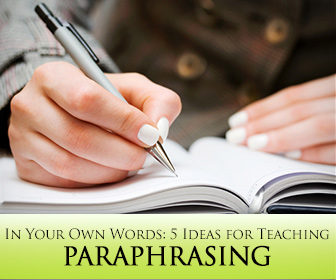
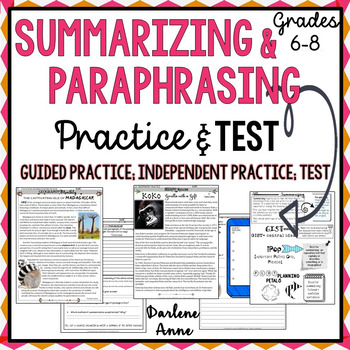

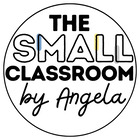

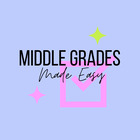
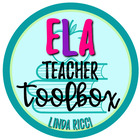

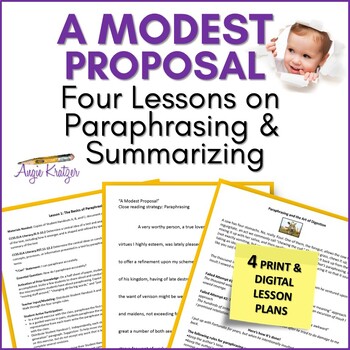
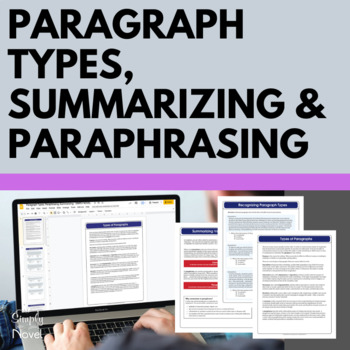

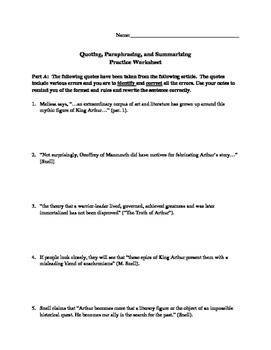


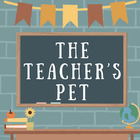

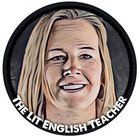







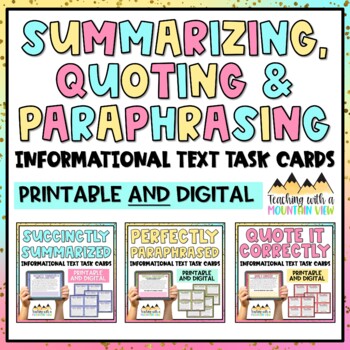



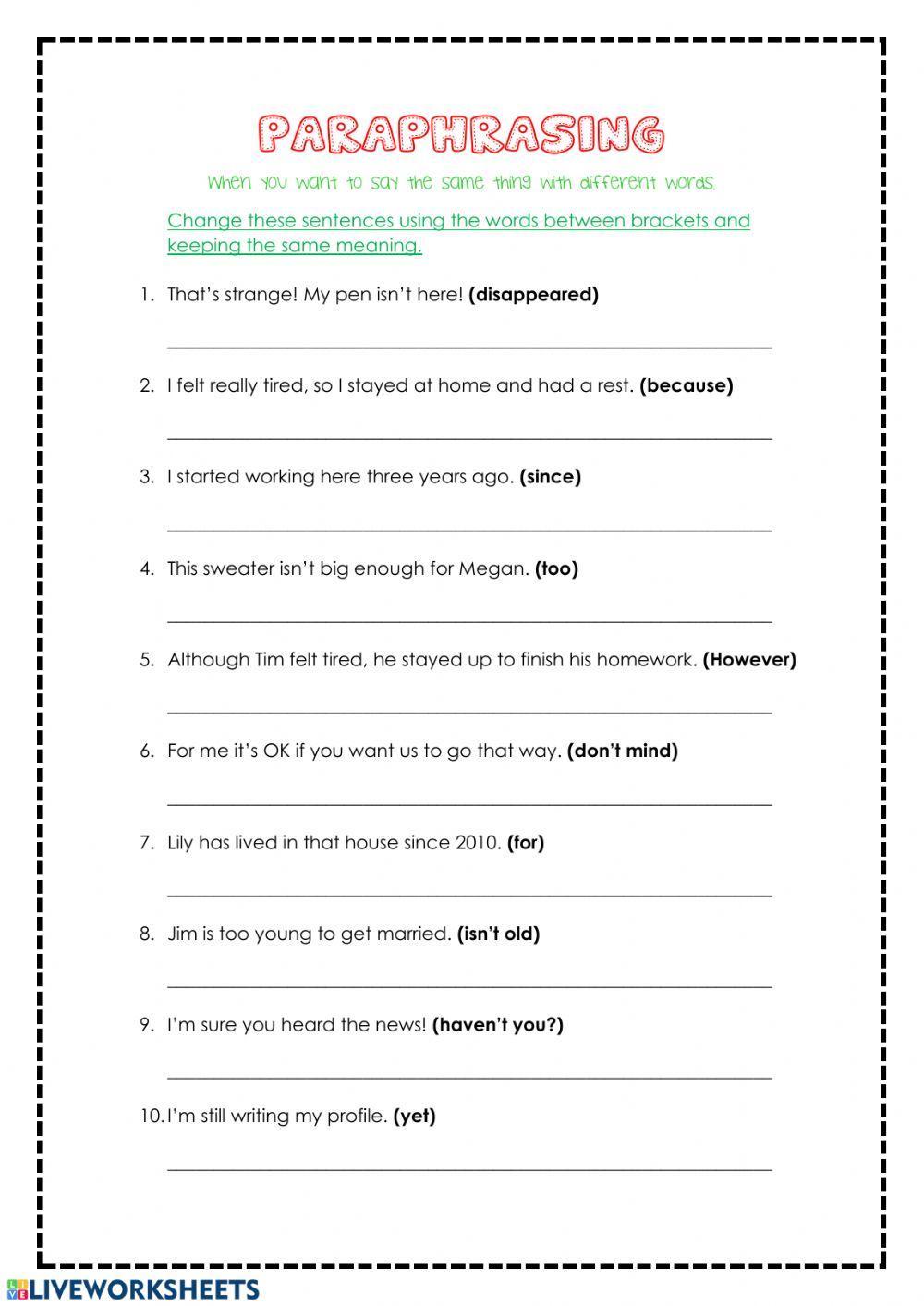





IMAGES
VIDEO
COMMENTS
Printable Paraphrasing Worksheets Click the buttons to print each worksheet and answer key. The Paragraph. Paraphrasing means restating an author's words in your own words without changing the meaning of the passage or including any interpretation of your own. When you paraphrase something, you only relay the idea expressed, not the entire ...
Paraphrasing. Comprehend then write. Students read a text and then re-write the text in their own words. These worksheets combine comprehension and writing. ... Our members helped us give away millions of worksheets last year. We provide free educational materials to parents and teachers in over 100 countries. If you can, please consider ...
Welcome to ESL Printables, the website where English Language teachers exchange resources: worksheets, lesson plans, activities, etc. Our collection is growing every day with the help of many teachers. If you want to download you have to send your own contributions. Paraphrasing worksheets
3: Independent Practice (15 minutes) Pair Work: Have students work in pairs to paraphrase another paragraph provided on the board. Allow a few pairs to share their paraphrases with the class. Independent Practice: Distribute Paraphrasing Task Cards. (print or digital) Students paraphrase short paragraphs individually.
But teaching effective paraphrasing is necessary because the use of paraphrasing facilitates important literacy skills: It encourages repeated reading, develops note-taking habits as students track quotes and outline text details, and expands vocabulary as they consider appropriate ways to describe the original text.The skill may seem daunting to students because it takes time to find the ...
32 Paraphrasing English ESL worksheets pdf & doc. SORT BY. Most popular. TIME PERIOD. All-time. ag23. PARAPHRASING. There are 9 exercise. 14586 uses. helenadimi. Paraphrasing . This worksheet is ab. ... Paraphrasing for PET. This activity contai. 4030 uses. beagmeur. modals paraphrases K. Key to modals paraph. 719 uses. AimeeB. Hot Tips For ...
There's a second set of this Paraphrasing Worksheet with different example sentences, meaning you'll be able to follow up this task with a revision activity, or even set it as a homework task. You could also try these Paraphrasing Challenge Cards , which use a fun game format to bring a new sense of interaction to the task while making it ...
Paraphrasing Practice. Paraphrasing is all about summing up a lengthy text, and it can be a great way to help your child hone reading comprehension skills. In this exercise, your child will pick out the most important points of the story and summarize it in one sentence. Download Free Worksheet. See in a set (10)
Challenge students to paraphrase with the help of our Paraphrasing Practice Activity. The four steps of paraphrasing are included to help students as they highlight keywords and then paraphrase the included paragraph. This would be a great independent activity or assessment. This resource addresses the following standards: CCSS W.3.2, W.4.2, W.5.2; TEKS 3.12.B, 4.12.B, 5.12.B.Don't forget to ...
Paraphrasing: An effective comprehension strategy (Kletzien) Paraphrasing helps readers monitor their comprehension. Paraphrasing encourages readers to make connections with prior knowledge. Paraphrasing helps readers remember what they have read. Comprehension instruction in elementary school: A quarter-century of research progress (Pressley)
When you paraphrase, you convey the main ideas of a passage in your own words. A paraphrase should contain all the most important information in a brief format. Use the organizer below to identify what you want to make sure that you include when you paraphrase the passage. Write your paraphrase below. View Worksheet.
One of the activities that works well to illustrate the challenges of paraphrasing well is to create an activity in which students work together in groups to write paraphrases of short excerpts from texts and then give them to another group of students in the class to "paraphrase the paraphrase.". The second group can give it to a third ...
The summarizing worksheets and paraphrasing practice resources include engaging summarizing and paraphrasing worksheets, graphic organizers, anchor charts, checklists, bookmarks, digital notebooks, and plenty of scaffolded activities to help your students gain independence when summarizing and paraphrasing.
6. Lesson 1: Paraphrase with Synonyms -. 7. Explicitly teaching Grade 5/6 students how to ... 8. Paraphrasing and Citation Activities, APA Style 7th Edition. Showing 8 worksheets for Paraphrasing Elementary. Worksheets are Paraphrasing activities, Explicit teaching of paraphrasing and synonyms will, Test yo...
The important skill of paraphrasing is initially interrogated in this lesson and eventually plans relating to summarizing and quoting will be added. There is an interactive equivalent to this plan, "Paraphrasing In a Pinch", which can be used in a classroom that has an electronic device for each student and a strong WiFi signal. The interactive plan can also be used to flip a classroom.
Print Worksheet. 1. When you paraphrase, you should not change _____. specific locations. any words. the first sentence. the last sentence. 2. If you don't paraphrase an author's work, but rather ...
Summarizing Worksheet 1. Here is a worksheet to help students practice summarizing. Read four nonfiction paragraphs about trains, highlight or underline important information, and write a title for the passage related to its main idea. Then create a summary.
ID: 135998. 28/04/2020. Country code: AR. Country: Argentina. School subject: English as a Second Language (ESL) (1061958) Main content: Paraphrasing (2010070) From worksheet author: To introduce the idea of saying the same thing with different words. Other contents:
Moscow Worksheets. This is a fantastic bundle which includes everything you need to know about Moscow across 21 in-depth pages. These are ready-to-use Moscow worksheets that are perfect for teaching students about the Moscow, Russian Moskva, which is the capital and most populated city of Russia, situated in the westward part of the country ...
K5 Learning offers free worksheets, flashcards and inexpensive workbooks for kids in kindergarten to grade 5. Become a member to access additional content and skip ads. Students paraphrase short texts in their own words.
Level: elementary Age: 13-16 Downloads: 12 PINK - a song about teen problems Level: intermediate Age: 12-14 Downloads: 1415 Twisters Level: elementary Age: 4-12 ... This is a worksheet for the song ´Moscow Calling´ by Gorky Park. It will be good if you discuss the topic ´Telephone´ with your students. Hope, I´ve been useful)))
Moscow. This workship contains a short easy text relating to the topic "Moscow." It is for students of (A1), (A2) and (B1) levels. The text can be used for practising reading ...